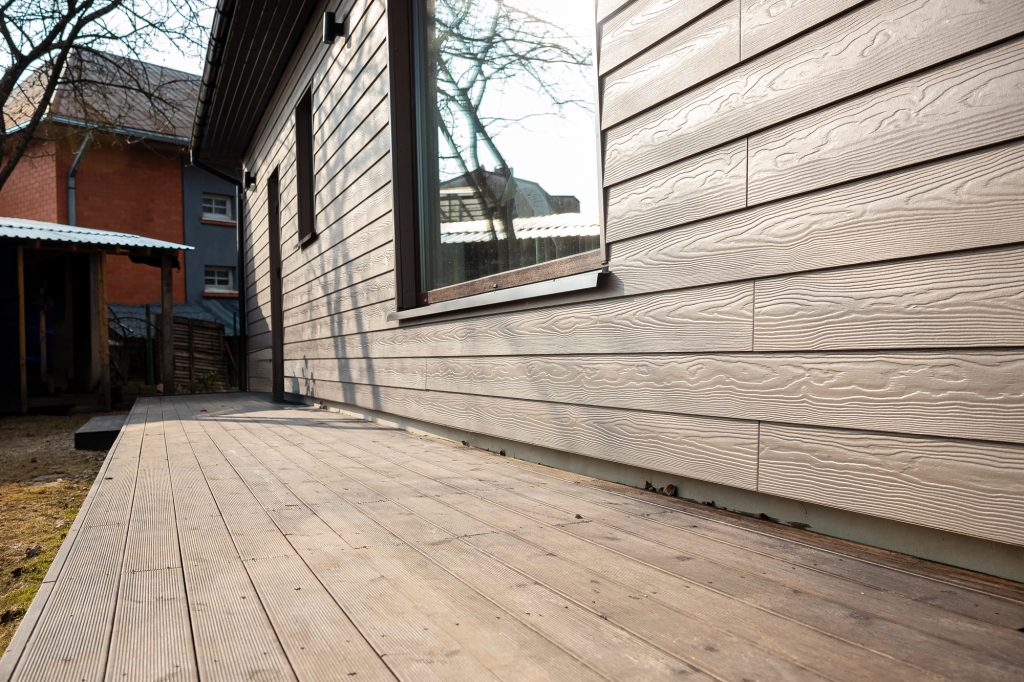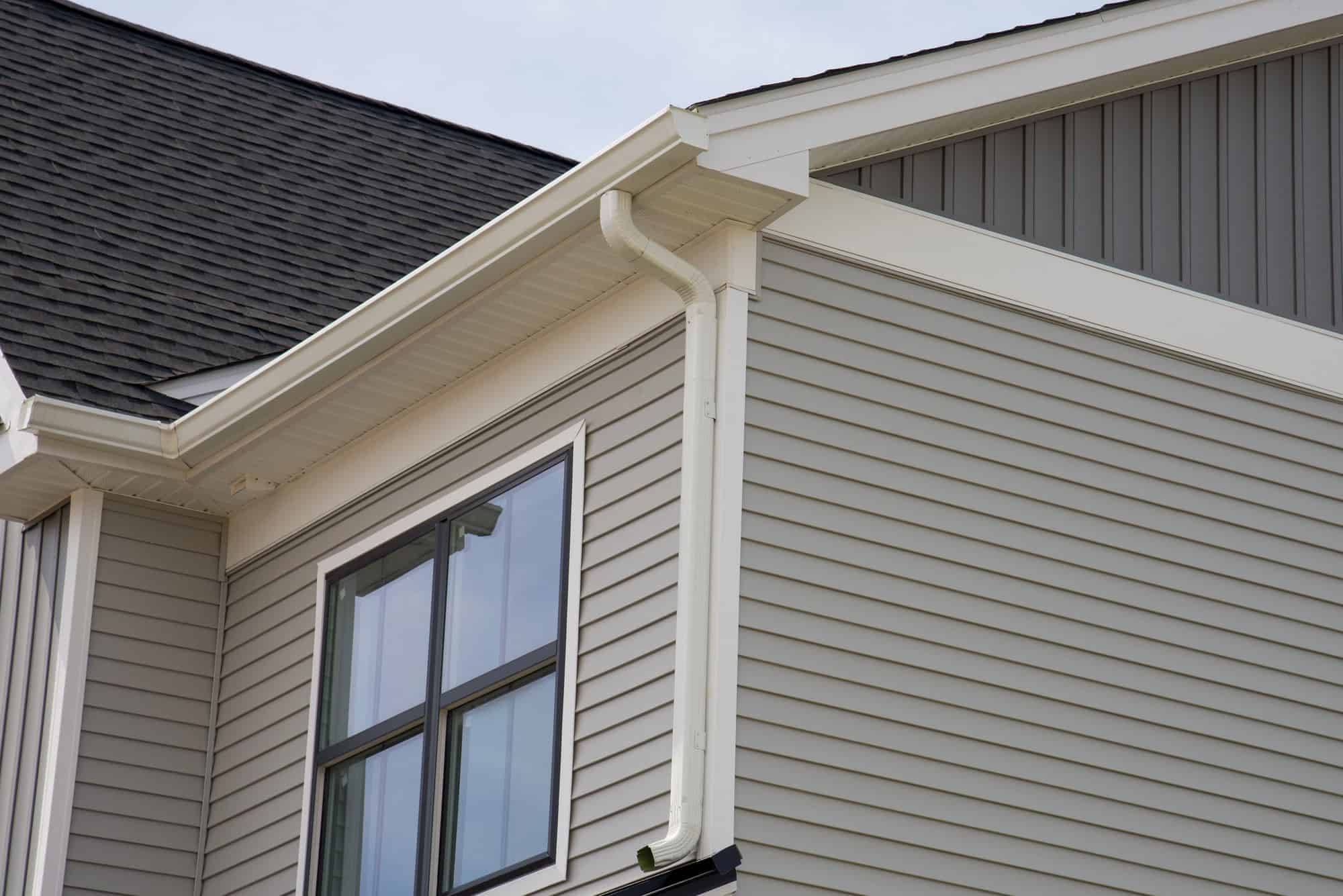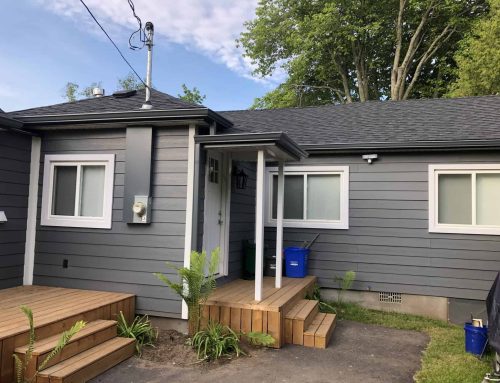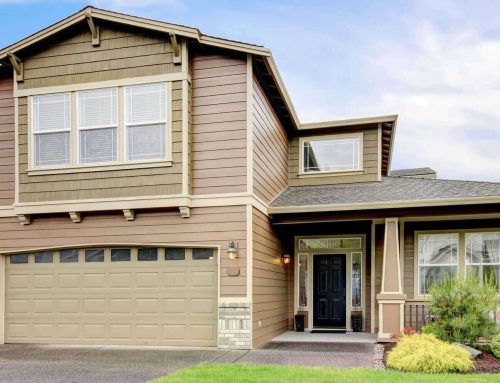Your home’s siding does more than just define its curb appeal—it serves as the primary barrier protecting your home’s structure from moisture, temperature extremes, pests, and the elements. When siding begins to fail, it doesn’t just affect your home’s appearance; it can lead to serious structural problems, increased energy costs, and potentially thousands of dollars in water damage repairs. The challenge for most homeowners is knowing when normal wear and tear has crossed the line into territory that requires replacement rather than simple repairs.
For homeowners in Toronto and the Greater Toronto Area, siding faces unique environmental challenges that can accelerate deterioration. The region’s climate—characterized by harsh winters with repeated freeze-thaw cycles, humid summers, seasonal storms, and significant temperature fluctuations—takes a toll on all types of exterior materials. Add to this the urban environment factors like pollution, road salt spray in winter, and the occasional severe weather event, and it becomes clear why regular siding assessments are essential for GTA homeowners.
Recognizing the warning signs early can save you from more extensive and expensive damage down the road. While some issues are obvious, others are subtle and easily overlooked until they’ve progressed significantly. Understanding what to look for and when to call in a professional siding contractor can protect both your investment and your home’s structural integrity.
Visual Warning Signs Your Siding Is Failing
Cracks, Holes, and Physical Damage
The most obvious indicators of siding problems are visible cracks, holes, or physical damage to the siding panels. Even small cracks can allow moisture infiltration, which in Toronto’s climate means water can freeze and expand during winter, making the damage progressively worse with each freeze-thaw cycle. Look for these specific issues:
Impact Damage: Dents, holes, or broken sections from hail, falling branches, or other impacts need immediate attention. Even if the damage appears minor, these breaches in your home’s protective envelope can lead to moisture problems behind the siding.
Splitting or Cracking: Horizontal or vertical cracks in siding panels often indicate age-related deterioration or stress from thermal expansion and contraction. In vinyl siding, cracking becomes more common as the material ages and loses flexibility, particularly after enduring multiple harsh Toronto winters.
Loose or Missing Panels: Siding panels that have come loose, blown off during storms, or gone missing entirely obviously need replacement. However, if you’re noticing multiple loose panels across different areas of your home, this suggests a more widespread problem that may warrant complete siding replacement rather than spot repairs.
Warping, Buckling, and Rotting
Siding that no longer lies flat against your home’s exterior indicates serious problems. Warping and buckling occur when siding has been compromised by moisture, improper installation, or age-related deterioration.
Warped Panels: Siding that appears wavy, bowed, or no longer follows the straight lines of your home’s structure has likely been damaged by moisture or excessive heat. Vinyl siding can warp if installed too tightly or exposed to extreme heat, while wood siding warps when exposed to moisture. In the GTA’s humid climate, this is a common issue with aging siding.
Buckling: When siding pulls away from the house or creates visible bumps and bulges, it typically indicates moisture problems behind the siding or issues with the underlying structure. This is particularly concerning because it suggests water may be compromising your home’s sheathing or framing.
Rot and Decay: This primarily affects wood siding but can also indicate problems with other materials. Use a screwdriver to gently probe areas that look suspicious—if the screwdriver sinks into the siding easily, rot has taken hold. Soft, spongy, or crumbling siding absolutely requires replacement. Pay special attention to areas near the ground, around windows and doors, and anywhere water tends to accumulate.
Fading, Peeling, and Surface Deterioration
While aesthetic issues alone don’t always necessitate replacement, they can indicate that your siding’s protective qualities have degraded significantly.
Severe Fading: All siding materials fade over time due to UV exposure, but severe, uneven fading—especially if accompanied by chalking (a powdery residue on the surface)—indicates that the siding has weathered beyond its protective capabilities. This is common in vinyl siding that’s 15+ years old.
Peeling Paint: For painted siding, paint that’s peeling, bubbling, or flaking off frequently (requiring repainting every few years) often signals moisture problems beneath the surface. This is a red flag that the siding may no longer be providing adequate moisture protection.
Mold, Mildew, and Algae Growth: While some surface growth can be cleaned, persistent or widespread mold and mildew growth—especially if it returns quickly after cleaning—indicates that moisture is penetrating the siding. Toronto’s humid climate makes this a particular concern for homes with poor drainage or inadequate ventilation.
Interior Warning Signs
Sometimes the most telling signs of siding failure appear inside your home rather than outside.
Water Stains on Interior Walls: Stains, discoloration, or water marks on interior walls, particularly near exterior walls, suggest that water is penetrating your siding and reaching the interior structure.
Peeling Wallpaper or Paint: Interior wallpaper or paint that’s peeling or bubbling on exterior walls often indicates moisture intrusion from outside, which could be caused by failing siding.
Increased Heating and Cooling Costs: A sudden spike in energy bills, or consistently high costs despite an efficient HVAC system, can indicate that your siding and underlying insulation are no longer providing adequate thermal protection. In Toronto’s climate, with temperature extremes in both summer and winter, compromised siding can significantly impact energy efficiency.
Visible Mold Inside: If you notice mold growth on interior walls, especially on exterior-facing walls, this is a serious concern that requires immediate investigation. The moisture supporting mold growth is likely coming through failed siding.

Understanding Siding Lifespans by Material Type
Different siding materials have varying expected lifespans, and understanding these can help you determine whether your siding issues are due to normal aging or premature failure. In Toronto’s demanding climate, these lifespans may be at the shorter end of typical ranges.
Vinyl Siding
Expected Lifespan: 20-40 years, with most installations in the GTA lasting 25-35 years with proper maintenance.
Vinyl siding is popular in Toronto due to its affordability, low maintenance requirements, and reasonable durability. However, it can become brittle in extreme cold and may crack or warp over time. Quality matters significantly—premium vinyl siding lasts considerably longer than builder-grade options. Signs that vinyl siding is nearing the end of its life include widespread cracking, significant fading and chalking, brittleness (especially noticeable in cold weather), and frequent panels coming loose.
Wood Siding (Cedar, Pine, or Engineered Wood)
Expected Lifespan: 15-40 years depending on the type and maintenance level.
Natural wood siding like cedar can last 30-40 years with excellent maintenance, including regular painting or staining, proper sealing, and prompt repairs. However, in Toronto’s climate with its moisture and freeze-thaw cycles, poorly maintained wood siding may begin showing serious problems after just 15-20 years. Engineered wood products like hardboard siding typically last 20-30 years but are more susceptible to moisture damage than natural wood. Wood siding requires the most maintenance of any siding type, and neglect significantly shortens its lifespan.
Fiber Cement Siding
Expected Lifespan: 50+ years, often 50-80 years with proper maintenance.
Fiber cement (like James Hardie products) has become increasingly popular in the GTA due to its exceptional durability, resistance to rot, insects, and fire, and ability to withstand extreme temperature fluctuations. While more expensive initially, fiber cement offers excellent long-term value. It’s particularly well-suited to Toronto’s climate because it handles moisture and temperature extremes better than most alternatives. Even high-quality fiber cement siding should be inspected if showing signs of damage, as improper installation can cause premature failure.
Aluminum and Steel Siding
Expected Lifespan: 30-50 years for aluminum, 40-60 years for steel.
Metal siding is durable and low-maintenance but can dent from impacts and may develop rust or corrosion over time, especially in Toronto’s winter environment where road salt can accelerate corrosion. Aluminum siding was particularly popular in the 1970s-1990s, so many Toronto homes with original aluminum siding are approaching or exceeding its expected lifespan.
Brick and Stone Veneer
Expected Lifespan: 100+ years for properly installed and maintained masonry.
While brick and stone themselves are extremely durable, the mortar between them requires periodic maintenance. In Toronto, freeze-thaw cycles can cause mortar deterioration, requiring repointing every 25-30 years. While brick rarely needs complete replacement, severe cracking, spalling (surface flaking), or structural movement may necessitate extensive repairs or rebuilding sections.
Toronto Climate Considerations for Siding Longevity
The Greater Toronto Area’s climate presents specific challenges that can accelerate siding deterioration and influence replacement timing.
Freeze-Thaw Cycle Impact
Toronto experiences numerous freeze-thaw cycles each winter, where temperatures fluctuate above and below freezing repeatedly. This pattern is particularly damaging to siding because any moisture that has penetrated cracks or seams freezes, expands, and creates additional stress. Over years, this cycle causes small cracks to become larger, accelerates rot in wood siding, and can cause sealant failures around windows and doors.
Humidity and Moisture
The GTA experiences significant humidity, especially during summer months. Combined with occasional heavy rainfall and the moisture load from snow accumulation and melt, this creates conditions where moisture-related siding problems develop more readily than in drier climates. Proper installation with adequate moisture barriers and ventilation is crucial for siding longevity in this environment.
Storm Damage
Severe thunderstorms, high winds, and occasional hail events can cause sudden damage to siding. Even if individual storm events don’t cause obvious damage, repeated exposure to severe weather gradually weakens siding materials. After major storms like the 2009 tornado or severe windstorms, many GTA homeowners discovered siding damage that warranted replacement.
Urban Environment Factors
For Toronto residents, urban factors also affect siding. Road salt spray from winter streets, air pollution, and physical wear from urban density all contribute to siding deterioration. Homes near major roadways may experience faster degradation than those in more suburban settings.
When to Repair vs. When to Replace
Not every siding problem requires complete replacement. Understanding when repairs are sufficient versus when replacement is necessary can save money while ensuring your home remains protected.
Repair Is Appropriate When:
Damage is localized to a specific area (less than 10-15% of total siding), the siding is relatively new (less than halfway through its expected lifespan), matching materials are available for seamless repairs, the underlying structure and moisture barriers are intact, and only cosmetic issues like minor fading or surface dirt are present.
Replacement Is Necessary When:
Damage is widespread across multiple sides of your home, the siding has reached or exceeded its expected lifespan, you’re experiencing moisture problems inside your home, repair costs would exceed 30-40% of replacement costs, you can’t find matching materials for extensive repairs, or there’s extensive rot, mold, or structural damage behind the siding.
The “One-Third Rule”
Many siding contractors in Toronto follow a guideline: if more than one-third of your siding shows problems or requires repair, complete replacement is typically more cost-effective than ongoing patch repairs. This is especially true for older siding that may soon develop additional problems.
Getting Professional Assessment
When you’re uncertain whether repair or replacement is appropriate, consulting with an experienced siding contractor provides clarity. A thorough inspection should examine not just the visible siding but also probe behind panels to check the underlying structure, assess moisture barriers and insulation, identify any water damage or rot, and provide a realistic timeline for when repairs will no longer be sufficient.
Taking Action: Protecting Your Home Investment
Recognizing that your siding needs replacement is the first step toward protecting your home from further damage. Delaying necessary siding replacement can lead to more serious and expensive problems, including structural wood rot, mold growth throughout wall cavities, compromised insulation and energy efficiency, interior water damage, and pest infiltration through compromised exterior barriers.
For Toronto homeowners, being proactive about siding maintenance and replacement is particularly important given the climate challenges that accelerate deterioration. Regular inspections—ideally twice yearly, in spring and fall—can help you catch problems early when repairs may still be viable.
If you’ve identified any of the warning signs discussed in this article, particularly multiple indicators or problems that suggest moisture infiltration, it’s time to get a professional assessment. A qualified siding contractor in the GTA can provide a comprehensive evaluation of your siding’s condition, help you understand your options for repair versus replacement, and ensure that any work is done to current Ontario Building Code standards.
Don’t wait until minor siding problems become major structural issues. Your home is likely your largest investment, and its exterior envelope is the first line of defense against the elements. Whether you’re noticing visible damage, experiencing higher energy bills, or your siding is simply reaching the end of its expected lifespan, addressing these concerns promptly protects both your property value and your family’s comfort.
For professional siding inspection and replacement services throughout the Greater Toronto Area, contact Ontario Dowmspout Service. We understand how Toronto’s unique climate affects your home’s exterior and can guide you toward the best solutions for your specific situation.






